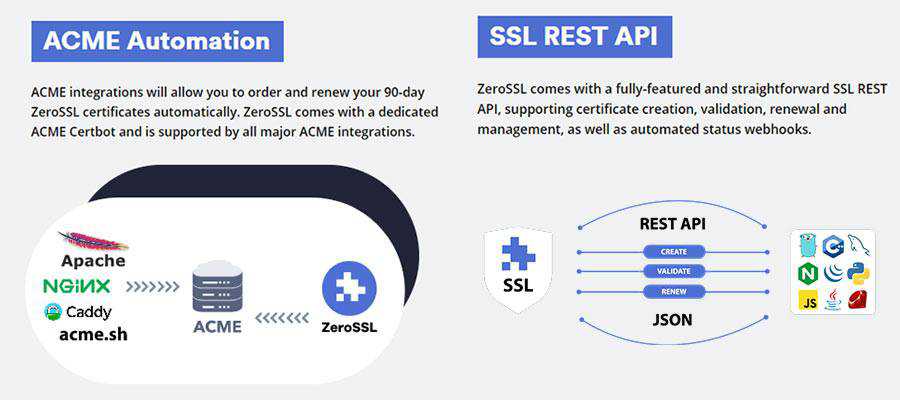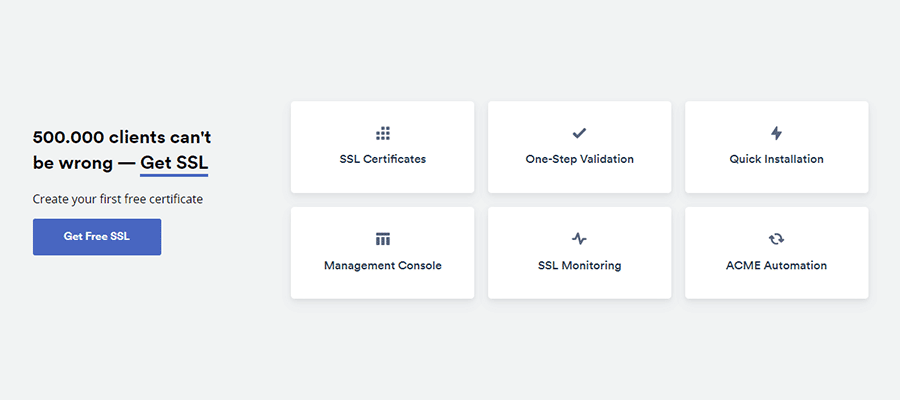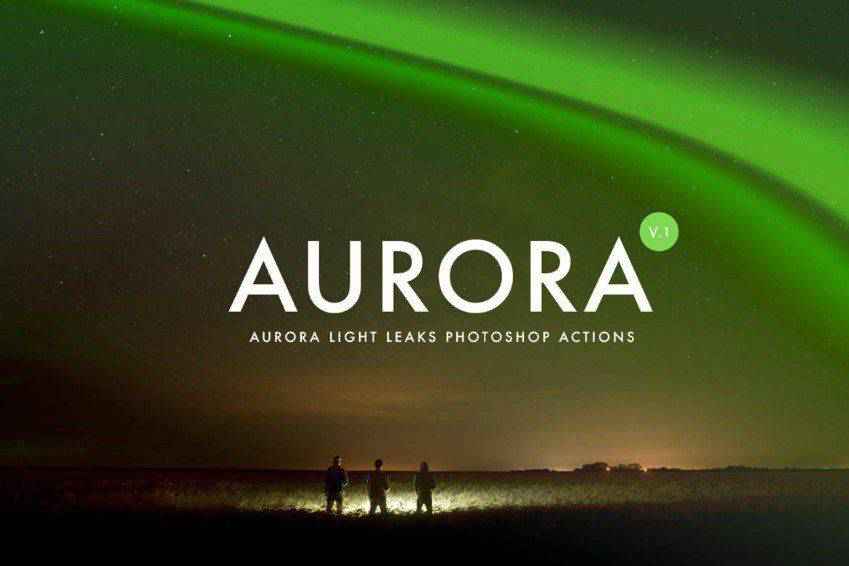Monthly Archiv: May, 2020
Latest PECL Releases:
Package:
Summary:
Manage the upload of public and private files
Groups:
Author:
Description:
This package can manage the upload of public and private files...
Read more at https://www.phpclasses.org/package/11645-PHP-Manage-the-upload-of-public-and-private-files.html#2020-05-11-23:20:22

Having a secure website is one of the best ways to establish consumer trust. When users see that padlock icon in their web browser’s address bar, they can breathe a bit easier when inputting personal and financial information.
That’s why encrypting data transfer via an SSL certificate is so important. For users, it brings peace of mind. For website owners, it helps to build a solid reputation. It’s now a must-have feature for every site.
ZeroSSL aims to make the web a more secure place. That’s why they’re offering free SSL certificates that can be up and running in as little as 5 minutes. Certificates are validated in seconds and have the ability to be automatically renewed.
It’s everything you love about free SSL certificates, but without the hassle!

Fast, Reliable and Free SSL Certificates for Every Website
ZeroSSL isn’t the only free SSL certificate option out there. For example, Let’s Encrypt is a popular choice. But it does offer several features that make it stand out:
Get Unlimited 90-Day Certificates for Free; 1-Year, Multi-Domain and Wildcard Options Available
When it comes to security, there are a number of different project requirements. That’s why ZeroSSL offers a variety of SSL certificate options to meet every need.
If you’re looking to quickly secure your website at no cost, their free plan allows you to register an unlimited number of certificates with a 90-day renewal term. Choose from single domain, multi-domain or wildcard options.
Need more? You can also get 1-year certificates as part of affordable monthly or yearly plans. These plans also include perks such as REST-API access and technical support.
Easy to Use
The process for securing your website with ZeroSSL is simple. Use their online tool to select your domain, generate your CSR and validate your domain in a single step. From there, install your certificate and you’re good to go!
In addition, you’ll also gain access to a fully-featured SSL management console. You can use it to manage every aspect of your certificates in one convenient place.

Automate Tasks with AMCE and the ZeroSSL REST API
Put your SSL management on autopilot and relax. ZeroSSL offers a simple and powerful REST API and ACME integrations that automate a number of common tasks. In fact, anything you can do manually in the SSL management console can be automated using ACME or the REST API.
ACME Integrations
ZeroSSL comes with a dedicated ACME Certbot, which enables you to order and renew certificates in a fully-automated way. The service also works with all major third-party ACME integrations as well. Either way, it’s completely free to use.
Already a Let’s Encrypt user? You’ll also be able to use ZeroSSL’s ACME Certbot to renew your existing certificates!
ZeroSSL REST API
The Zero SSL REST API offers a straightforward solution to automating certificate management. This well-documented API lets you create, renew and validate your certificates. It also includes automated status webhooks that help to ensure everything is running smoothly.

One-Step Domain Validation
Unlike Let’s Encrypt, ZeroSSL provides you with the ability to validate domain ownership via email. This greatly improves both the speed and efficiency of issuing certificates. Other validation methods include CNAME and HTTP file upload.
A Certificate Authority
ZeroSSL will be listed as the official certificate authority for any and all certificates you purchase through them. And, it’s a name you and your visitors can trust. ZeroSSL certificates are used by thousands of companies worldwide and are supported by 99.9% of servers, browsers and platforms.

A Better Way to Do Free SSL
ZeroSSL has become the better alternative for SSL certificates. They offer powerful features and unparalleled flexibility on a platform that has been built with developers in mind. Manage your certificates manually or with total automation, thanks to ACME integrations and a REST API.
The system is scalable, secure and incredibly easy to use. Sign up for your free SSL certificate, then validate and install it within mere minutes.
Plus, ZeroSSL offers more robust products such as multi-domain and wildcard certificates – both of which are included in the free plan. And, with an affordable monthly or yearly plan, you can get certificates on a 1-year renewal term along with access to the REST API.
So, what are you waiting for? Sign up with ZeroSSL and get your free SSL certificates today!
The post ZeroSSL Offers Free, Easy-To-Use SSL Certificates <span class="sponsored_text">Sponsored</span> appeared first on Speckyboy Design Magazine.
Platform.sh now supports displaying activities from your integrations in the API or command line.
This means that from now on, external integrations (GitHub, Gitlab, Slack, etc.) that you enable in your Platform.sh project will trigger activities every time that something happens with that integration.
This makes validating, testing, and troubleshooting an external integration so much easier.
These new activities are already available to users via the API or the CLI, and they will soon be displayed in the Platform.
A collection of our favorite web dev resources for the month of May, featuring useful JS tools, React components, and more!
Continue reading on Tutorialzine.
Light leaks immediately add a sense of warmth to your photos. They can range in intensity and may provide a soft filter or a more intense glow. Wherever their intensity falls on the spectrum, one thing remains certain: trying to create light leaks manually is a chore.
Unless you’re capturing light leaks in your photography out in the wild, recreating this effect digitally is difficult. That’s why using Photoshop actions is always a preferred method of recourse.
To save you some time, we’ve put together a collection of light leak effects Photoshop actions that streamline your workflow, eliminate the guesswork, and provide you with a stellar end result that’s ultimately professional.
More Actions:
3D Effects,
Art Effects,
B&W Effects,
Bokeh Effects,
Cinema & Movie Effects,
Comic & Cartoon Effects,
Duotone Effects,
Dispersion Effects,
Double Exposure Effects,
Glitch Effects,
HDR Effects,
Retro & Vintage Effects,
Sketch Effects, or
Text Effects.
The FilterGrade Light Leak Photoshop Actions is actually a set of 40 different actions act you can use to create the look of real film on your digital photos. These actions work on landscapes and any bright scene to add more color and drama. The actions include color variations, light fades, film errors and burns, dual leaks, blocks, and more.

Another option is the Prestalgia Nostalgic Effects & Light Leaks Photoshop Actions set. This set includes 25 retro effects, 25 light leaks, and snapshot prerendering. It also has fully editable layers and it’s totally non-destructive, so your original photo is preserved.

Here’s another great option for taking your images to the next level. The Light Leaks Vol. 1 Photoshop Presets pack contains 25 presets that are designed to bring out the best in your photos. These light effects help you to mimic the look of vintage photos. All presets included here are non-destructive.

The Thriller Lights Photoshop Actions set comes with one action that can be implemented with a single click, full instructions, and editable layers so you have full control over the end result. This action adds an intense glow around the subject of your photo, creating a quite dramatic effect.

The Light & Flares Photoshop Action adds a super dramatic effect to your photos. It mimics the effect of vintage cameras and lenses when light leaks or flares from the lens. This set comes with 12 light leak actions and 4 leans flare actions. You can easily edit the layers of these effects as well, so you hav ultimate control.

The Wall of Lights Photoshop Actions creates a real impact on your photos. It works by creating a literal wall of lights behind the subject of your photo quickly and easily. It’s well-layered, fully editable, and non-destructive. Plus, it comes with 20 color corrections.

This is another really interesting option for adding light effects to your photos. The Light Painting Photoshop action can be setup with one click. It works best on text or logos and adds the look of a light painting to your image. It also comes with a help file and has 8 color options to choose from.

The Light Show Animation Photoshop Action is another way to add drama through lighting to your photos. It comes with a video tutorial so you’ll never have to second guess yourself about how to use it and the end result is a powerful and colorful light effect streaking across your photos like a spotlight.

The Aurora Light Photoshop Actions set offers a light leak effect for your images. This set contains 16 actions, is non destructive, and includes a bonus matte effect as well. This is fully editable, so you have ultimate control over your photos and it comes with full instructions.

The Dual Light Photoshop Action works by creating a double light effect in your photos. You can customize every aspect of the effect with bokeh and smoke effects. It works on all different types of photos and comes with 20 color presets as well as full video instructions.

Another great option is the Double Light Photoshop Action. It allows you to select from a variety of colors, intensity, and more to achieve a fully customized effect. It also comes with full instructions, leaving nothing to guesswork.

You may also wish to consider the Lucent Photoshop Action. This one makes it super easy to apply the effect. All you have to do is fill the area of the photo you want to emphasize with a color, then click Play on the action. that’s it! IT comes with a video tutorial as well, so if you have any questions, you won’t get stuck.

The Light Leaks Vol.2 Photoshop Presets is another set you should consider for your photo edits. It comes with 25 different light leak options that add a compelling effect. These presets are non-destructive and can give your images a vintage style.

Another great option is the Electrum Lightning Photoshop Action. This one creates a really stunning electric lightning effect across your photo. You can change the colors, contrast, and gradient of the lightning effect, 10 color presets as well. And you can implement it with just one click.

You might also want to consider the Impulse Photoshop Actions set. This one is super easy to use. Just apply it to an area of your picture, play the action, and the creates an energy lightning effect. It comes with text and video tutorials, is non-destructive, and creates well-organized layers so you can make further customizations as needed.

The last action on our list is the Thriller Lights Photoshop Action. This one creates a bit of drama in your photos by adding light leak effects. It’s non-destructive and allows you to fully customize the layers as well and gives you plenty of control over every aspect of its output.

How to Install Photoshop Actions
- Download and unzip the action file
- Launch Photoshop
- Go to Window > Actions
- Select Load Actions from the menu and go to the folder where you saved the unzipped action file to select it
- The Action will now be installed
- To use the newly installed action, locate it in the Action panel
- Click the triangle to the left of the action name to see the list of available actions
- Click the action you want to play and press the play button at the bottom of the Actions panel
We hope you’ve enjoyed this list of light leak effect Photoshop action sets. Each of these options give you a solid foundation for building a fantastic final image. Any of these would give your photos the drama, vintage look, or style you seek. Happy editing!
The post The 15 Best Light Leak Effect Photoshop Action Sets for 2021 appeared first on Speckyboy Design Magazine.
Package:
Summary:
Establish relations between model objects
Groups:
Author:
Description:
This package can be used to establish relations between model objects...
Read more at https://www.phpclasses.org/package/11644-PHP-Establish-relations-between-model-objects.html#2020-05-10-13:16:14

Package:
Summary:
Execute common database queries using PDO
Groups:
Author:
Description:
This package can execute common database queries using PDO...
Read more at https://www.phpclasses.org/package/11643-PHP-Execute-common-database-queries-using-PDO.html#2020-05-09-17:33:00

Package:
Summary:
Execute common database queries using PDOsssssssss
Groups:
Author:
Description:
This package can execute common database queries using PDO...
Read more at https://www.phpclasses.org/package/11643-PHP-Execute-common-database-queries-using-PDOsssssssss.html#2020-05-09-17:33:00

The front page of the LLVM website proudly claims that:
Clang is an “LLVM native” C/C++/Objective-C compiler, which aims to deliver amazingly fast compiles […]
I’m not sure whether this has been true in the past, but it certainly isn’t true now. Each LLVM release is a few percent slower than the last. LLVM 10 put some extra effort in this area, and somehow managed to make Rust compilation a whole 10% slower, for as yet unknown reasons.
One might argue that this is expected, as the optimization pipeline is continuously being improved, and more aggressive optimizations have higher compile-time requirements. While that may be true, I don’t think it is a desirable trend: For the most part, optimization is already “good enough”, and additional optimizations have the unfortunate trend to trade large compile-time increases for very minor (and/or very rare) improvements to run-time performance.
The larger problem is that LLVM simply does not track compile-time regressions. While LNT tracks run-time performance over time, the same is not being done for compile-time or memory usage. The end result is that patches introduce unintentional compile-time regressions that go unnoticed, and can no longer be easily identified by the time the next release rolls out.
The first priority then is to make sure that we can identify regressions accurately and in a timely manner. Rust does this by running a set of benchmarks on every merge, with the data available on perf.rust-lang.org. Additionally, it is possible to run benchmarks against pull requests using the @rust-timer bot. This helps evaluate changes that are intended to improve compile-time performance, or are suspected of having non-trivial compile-time cost.
I have set up a similar service for LLVM, with the results viewable at llvm-compile-time-tracker.com. Probably the most interesting part are the relative instructions and max-rss graphs, which show the percentual change relative to a baseline. I want to briefly describe the setup here.
The measurements are based on CTMark, which is a collection of some larger programs that are part of the LLVM test suite. These were added as part of a previous attempt to track compile-time.
For every tested commit, the programs are compiled in three different configurations: O3, ReleaseThinLTO and ReleaseLTO-g. All of these use -O3 in three different LTO configurations (none, thin and fat), with the last one also enabling debuginfo generation.
Compilation and linking statistics are gathered using perf (most of them), GNU time (max-rss and wall-time) and size (binary size). The following statistics are available:
instructions (stable and useful)
max-rss (stable and useful)
task-clock (way too noisy)
cycles (noisy)
branches (stable)
branch-misses (noisy)
wall-time (way too noisy)
size-total (completely stable)
size-text (completely stable)
size-data (completely stable)
size-bss (completely stable)
The most useful statistics are instructions, max-rss and size-total/size-text, and these are the only ones I really look at. “instructions” is a stable proxy metric for compile-time. Instructions retired is not a perfect metric, because it discounts issues like cache/memory latency, branch misprediction and ILP, but most of the performance problems affecting LLVM tend to be simpler than that.
The actual time metrics task-clock and wall-time are too noisy to be useful and also undergo “seasonal variation”. This could be mitigated by running benchmarks
Truncated by Planet PHP, read more at the original (another 18403 bytes)




















